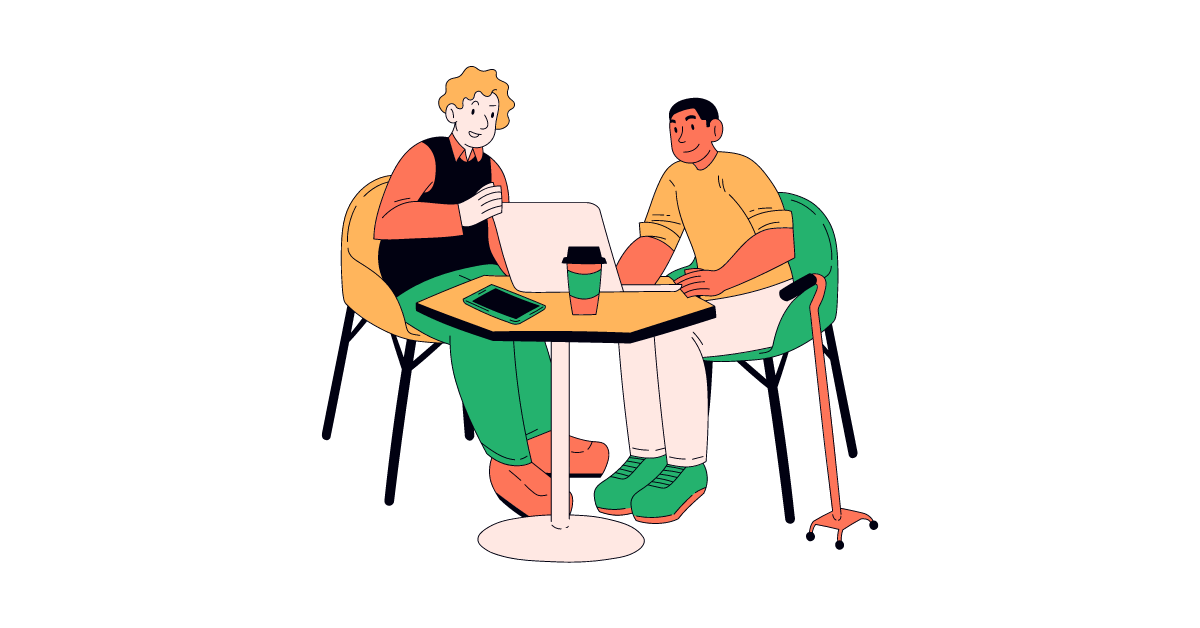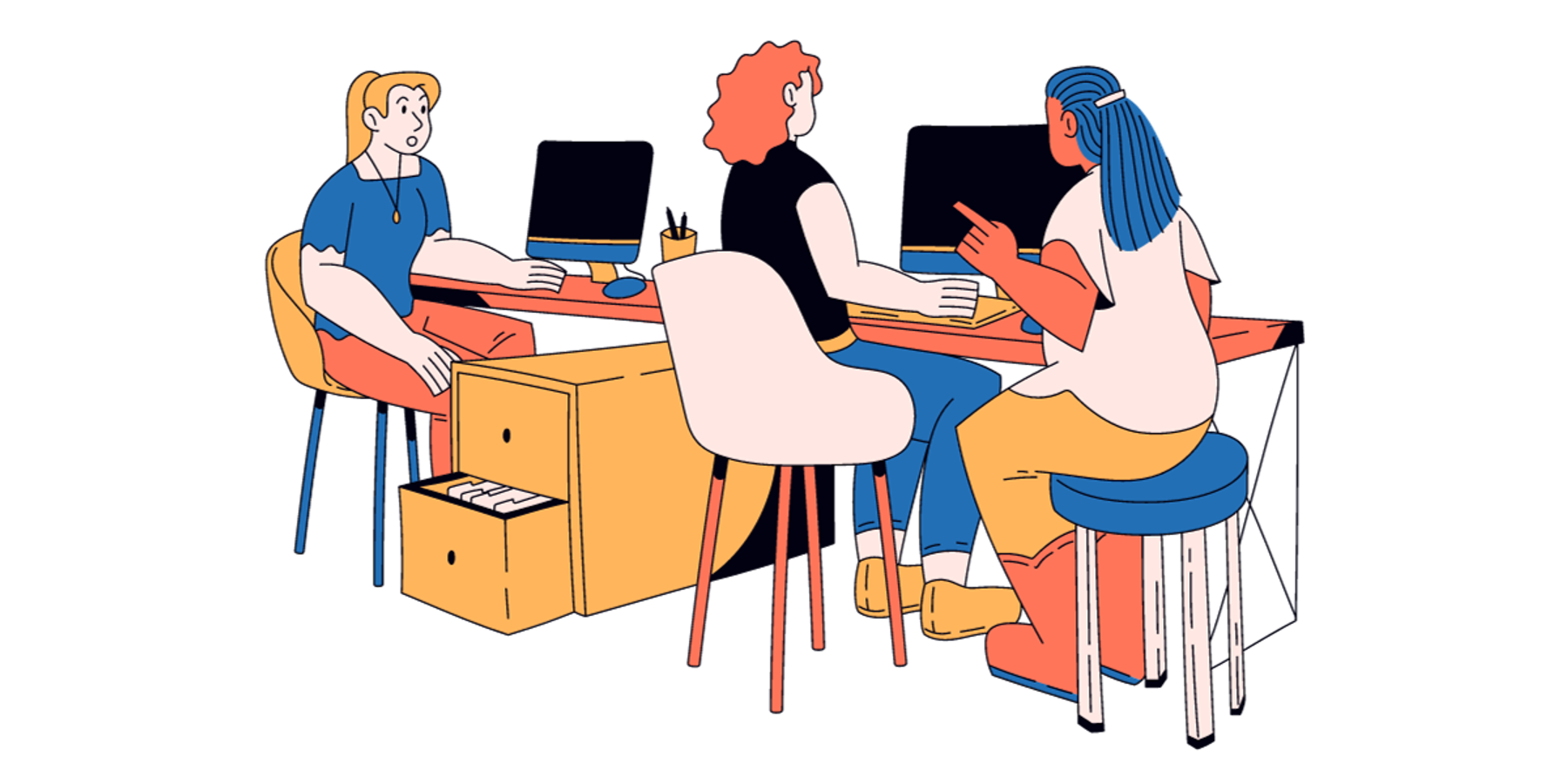Intersectionality is the concept that people are affected by multiple systems of power, often each tied to a specific identity they hold, that converge and interact. These “intersecting” centers of power can result in oppression that is layered and unique to the individual holding a given combination of identities. For example, intersectionality means that the experience of a Black queer woman at work will be shaped by both her Blackness and queerness, and the intersection of those two things. Her experiences will be different from non-Black queer people, and they’ll also be different from Black straight people.
The term was coined by legal scholar Kimberlé Crenshaw in 1989 to describe the experience of Black women in America.
In the workplace, an understanding of the intersectionality definition and the realities it produces helps us recognize the different ways in which people experience workplace policies. Understanding intersectionality’s definition is a tool through which we can perceive unique, individual needs and adapt the workplace to suit everyone while avoiding injustices. Companies that focus only on diversity quotas rather than developing understandings of intersectionality, inclusion, and belonging will find they may be able to get diverse recruits in the door — but that retention will be another matter. Diversity, equity, inclusion, and belonging programs that include intersectionality in their foundation, on the other hand, can help ensure the opposite is true. Let’s explore.
An intersectionality definition
Let’s begin with an intersectionality definition. As a framework for analysis, intersectionality instructs us to identify where power is held and where power centers collide. It allows us to critically assess institutions, including areas where people are subject to multiple forms of oppression.
For example, a multiracial trans woman’s experience of oppression is the result of multiple, intersecting biases. Her experience of oppression will not only be distinct from cishet women, but also from monoracial trans women.
The intersection analogy
In establishing the foundational idea of intersectionality and its definition, Professor of Law at Columbia University and UCLA Kimberlé Crenshaw used the analogy of a street intersection. Let’s apply this analogy to a company in order to consider intersectionality in the workplace.
- The roads represent the way the workforce is structured by race, gender, socioeconomic status, etc.
- The traffic that flows through the road are the policies and practices of the company.
Standing in the middle of the intersection of racism and sexism is an Indigenous woman. She gets bombarded by the simultaneous impact of the company’s gender and race traffic.
If you are in traffic at that intersection, it’s not because of traffic from one street or another — it’s where they intersect that causes the most impact. That’s intersectionality at work.
What is intersectionality at work?
Work is one of those places where we are subject to a lot of policies. Companies have policies about recruitment, hiring, how we work, when we work, or how we’re asked to present ourselves. These policies are often the vehicle through which discrimination is carried out. There are also social norms and rules that dictate how we perceive and interact with one another, and discrimination can show up at work in the form of microaggressions and biases.
Types of oppression at work
Harvard Business Review describes one example of workplace bias as the “neurodivergent leadership ceiling”. This is the phenomenon where supervisor bias keeps autistic people out of leadership positions because they lack charisma or extreme extraversion (despite research showing that introverts lead better in dynamic environments than extroverts). Now, imagine a team member who is openly neurodivergent, LGBTQIA+, Indigenous, and visibly uses accessibility aids. If you can imagine some of the intersectional bias they would face, then you understand the intersectionality definition as it pertains to the workplace.
Social injustices like racism and sexism can also collide at work, creating multiple layers of injustice. The New York Times covered a study that found that almost 58% of men and women of color (those who identified as Asian, African-American, Latino, or a combination) report facing a so-called “emotional tax,” where they feel “highly on guard at work.” Women of color reported being worried about both sexism and racism in the workplace, with racial bias ranking slightly higher in their concerns.
Why is intersectionality at work important?
For DEIB efforts, learning about the intersectionality definition as it applies to both problems and daily work is a good framework to support a diverse staff. Intersectionality helps us reduce the effects of oppression.
For our talent to feel safe, valued, and respected, we must understand how they identify and how they uniquely experience workplace policies.
A common pitfall: diversity quotas
A diversity quota is a method to increase underrepresented groups at work by requiring specific percentage goals. For example, if the population of a community is 25% Asian, a company might use a quota to interview or hire 25% Asian candidates as proof they care about DEIB.
Focusing on diversity quotas without intersectionality, though, is just checking a box (at best). At worst, it's creating an environment in which diverse groups of people are thrust together into an environment that doesn’t understand their needs. It’s like pushing someone into that busy intersection in our earlier example and simply saying “good luck.”
Intersectionality at work is about mitigating difficulties coming from both the company’s traffic as well as the cross-traffic created by the various identities on a team. Acting on the intersectionality definition is listening to people’s needs and adapting the workplace as a result.
Intersectionality examples at work
The definition of intersectionality has always been linked to the workplace. In fact, Kimberlé Crenshaw developed intersectionality in response to the following discrimination lawsuit at work.
Hiring discrimination
Emma DeGraffenreid brought a lawsuit against a car manufacturing plant claiming she was not hired because she was a Black woman. The judge dismissed the claim citing that there was no sexism or racism in the company's hiring policy. The judge pointed out that the company hired (white) women in the front office and Black people (men) for manual labor positions. The judge failed to understand that two forms of discrimination came together to create a unique form of oppression.
Pay inequity
A private education company based in Thailand has almost exclusively foreign, white, male management. The company’s policy is to pay foreign workers more. A female Thai worker fills a management position when it is suddenly vacated. Her exceptional performance earns her the position on a permanent basis, but at a fraction of her White male colleagues’ salaries. When she approaches HR, they simply state it is the policy for all Thai workers, adding that they have (White, foreign) women working in management. The company failed to see that the employee was discriminated against not only because she is Thai, but also because she is a woman. As a Thai woman (or man), would you apply to management going forward?
How do you promote intersectionality in the workplace?
To promote intersectionality at work, we need to create opportunities for employees to express their identity, talk openly, and communicate needs. Then, we must adapt the workplace environment. Acting on what is expressed would be realizing the definition of intersectionality at work. How exactly?
1. Know how your employees identify.
If you are unsure of the various identities of your team, consider that your employees may not have felt welcome or comfortable expressing them. This could be a company-wide problem or even a you problem.
Bring up the intersectionality definition at team meetings. Use the intersectionality definition as a way to start open-minded discussions and lay the groundwork for inclusion.
To capture ideas from team members who aren’t as extroverted or need time to process, create a demographic survey to first assess who is well-represented and underrepresented in your company — and then identify areas for better inclusion.
To incorporate the intersectionality definition principles in your survey, it’s important to frame the race or ethnicity question on a survey with an eye towards inclusivity. Always feature the ability for folks to include multiple answers. Use open-answer fields where people can self-state their identity without being limited to checking a box, as well.
2. Create learning opportunities.
Host DEIB trainings that focuses on a variety of identities and cultures that are present in your company. How about a guided training on the intersectionality definition and how it affects the workplace environment for various team members? Make sure you are not putting the burden of education on the employees you perceive as those “with diversity.” Remember diversity describes a whole, not a single person. It’s not about asking, “Can you help me be a better person?” It’s about creating opportunities for learning and two-way conversations.
3. Adapt your workplace
How can employees better express their needs when it comes to schedules, days off, sick days, what they wear, how they work, where they work, and more? Schedule one-on-one check-ins or send out monthly surveys to get direct input. Managers should also have the power and ability to make those adaptations without bureaucracy.
Use onboarding surveys for all hired talent. Ask them how they like to work and how they like to receive and give feedback. An understanding of the intersectionality definition should instruct how these surveys are conducted.
Dodging traffic at the intersection
Emphasizing diversity quotas without intersectionality puts employees in a position where they’re dodging traffic from all sides. The intersectionality definition is an indispensable lens through which we can analyze our DEIB challenges and build a workplace where people want to be.




